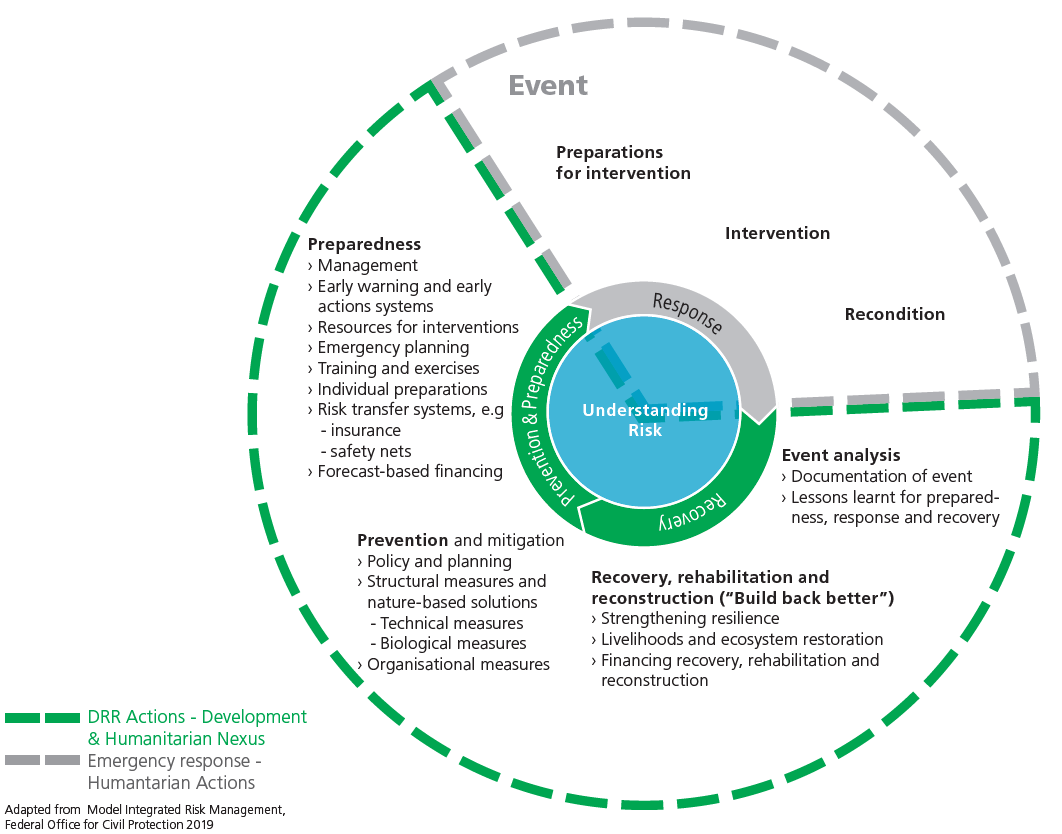A disaster is a serious disruption of the functioning of a community or a society involving widespread human, material, economic or environmental losses and impacts, which exceeds the ability of the affected community or society to cope using its own resources.
Disaster risk = Hazard x Exposure x Vulnerability/Coping capacities
Risk staircase
The Risk Staircase Model depicts the approach to systematically reduce risk based on the Integrated Risk Management (IRM) approach. It illustrates the different strategies and related measures to systematically reduce risk in order of their effectiveness. The starting point for managing risk is prevention, followed by the reduction of risk, and on to preparedness for response and risk-sharing mechanisms in order to achieve an acceptable level of residual risk.
Hover your mouse cursor over the elements of the risk staircase for more information. If you cannot read all information in the pop-up boxes, try zooming-out your screen (e.g. to 75%).
For possible indicators along the risk staircase see the Indicator toolbox by the Swiss NGO DRR Platform.
DRR Actions within the Integrated Risk Management cycle
The Integrated Risk Management (IRM) cycle is a fundamental guiding concept for the international DRR community and governments to identify and plan DRR measures. The approach links and coordinates humanitarian concerns and development issues expressed in appropriate DRR interventions and projects. The systematic approach of IRM identifies and assesses the risks (what can happen?), evaluates and prioritises them (what is allowed to happen?) and takes appropriate measures to reduce them (what should be done?).
The cycle covers measures for prevention and preparedness. Response aims at limiting the extent of losses. After an event, both reconstruction and rehabilitation measures have to be undertaken. Those should be based on event analyses and lessons learnt in order to avoid repeating failures from the past and to reduce possible future losses. Recovery efforts must avoid creating new risks and exacerbating existing ones (‘build back better’).
Successful integrated disaster risk management considers prevention and mitigation, preparedness, response and recovery as complementary mechanisms that need to be combined in an appropriate way and involve all actors and affected people.

